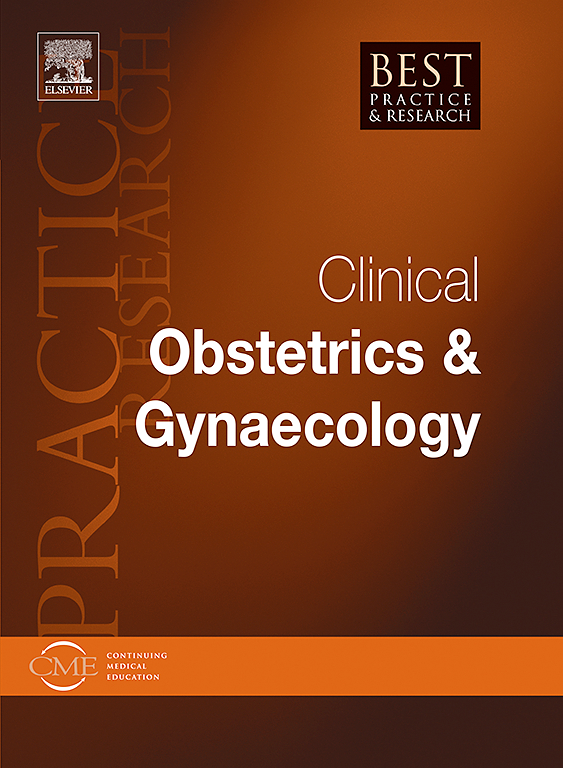妊娠期低动力性高血压的定义、鉴定、影响和管理
IF 4.1
2区 医学
Q1 OBSTETRICS & GYNECOLOGY
Best Practice & Research Clinical Obstetrics & Gynaecology
Pub Date : 2025-06-16
DOI:10.1016/j.bpobgyn.2025.102626
引用次数: 0
摘要
妊娠期高血压疾病表现出不同的母体血流动力学和心血管特征,从高动力状态到低动力状态。这些不同的产妇心血管情况可能演变成不同的结果,可能需要有针对性的方法。特别是,低动力的母体心血管状况可能与严重的妊娠早期并发症(特别是胎儿生长受限,无论是孤立的还是与妊娠高血压疾病相关的)有关。这种疾病的特点是血管收缩,血浆量低,心输出量和每搏量低。母体血流动力学状况的评估需要超声心动图评估或使用其他非侵入性设备,但在没有这些仪器的情况下,也有一种简单的临床方法可以让我们了解母体血流动力学概况:测量血压和心率。在低动力低心排血量的情况下,选择可能减少心排血量和心肌收缩力的药物来降低血压可能是不合理的,而直接作用于血管减少血管收缩的药物干预,如二氢吡啶钙通道阻滞剂和一氧化氮供体可能更合适。这种血流动力学指导的治疗方法可能不仅对母体血流动力学有积极的影响,而且对胎儿也有积极的影响,可能减少或减轻母体和胎儿的并发症。本文章由计算机程序翻译,如有差异,请以英文原文为准。
Definition, identification, implications and management of hypodynamic hypertension in pregnancy
Hypertensive disorders of pregnancy show different maternal hemodynamic and cardiovascular profiles going from a hyperdynamic to a hypodynamic condition. These different maternal cardiovascular situations might evolve towards different outcomes and might require targeted approaches. In particular, a hypodynamic maternal cardiovascular profile might be associated to severe and early complications of pregnancy (in particular fetal growth restriction, either isolated or associated to hypertensive disorders of pregnancy). This condition is characterized by a constriction of the vessels and a low plasma volume with low cardiac output and stroke volume. The assessment of the maternal hemodynamic condition requires an echocardiographic evaluation or the use of other non invasive devices, but in the absence of these instruments there is also a simple clinical method that can give us an idea of the maternal hemodynamic profile of the mother: the measurement of blood pressure and heart rate. In a hypodynamic low cardiac output condition, the choice of drugs that might reduce cardiac output and myocardial contractility to lower blood pressure might be irrational, whereas pharmacological interventions that directly act on the vessels reducing vasoconstriction, such as dihydropyridine calcium channel blockers and nitric oxide donors, might be more appropriate. This hemodynamic guided approach to therapy might have positive effect not only on maternal hemodynamics, but also on the fetal side, probably reducing or mitigating maternal and fetal complications.
求助全文
通过发布文献求助,成功后即可免费获取论文全文。
去求助
来源期刊
CiteScore
9.40
自引率
1.80%
发文量
113
审稿时长
54 days
期刊介绍:
In practical paperback format, each 200 page topic-based issue of Best Practice & Research Clinical Obstetrics & Gynaecology will provide a comprehensive review of current clinical practice and thinking within the specialties of obstetrics and gynaecology.
All chapters take the form of practical, evidence-based reviews that seek to address key clinical issues of diagnosis, treatment and patient management.
Each issue follows a problem-orientated approach that focuses on the key questions to be addressed, clearly defining what is known and not known. Management will be described in practical terms so that it can be applied to the individual patient.

 求助内容:
求助内容: 应助结果提醒方式:
应助结果提醒方式:


